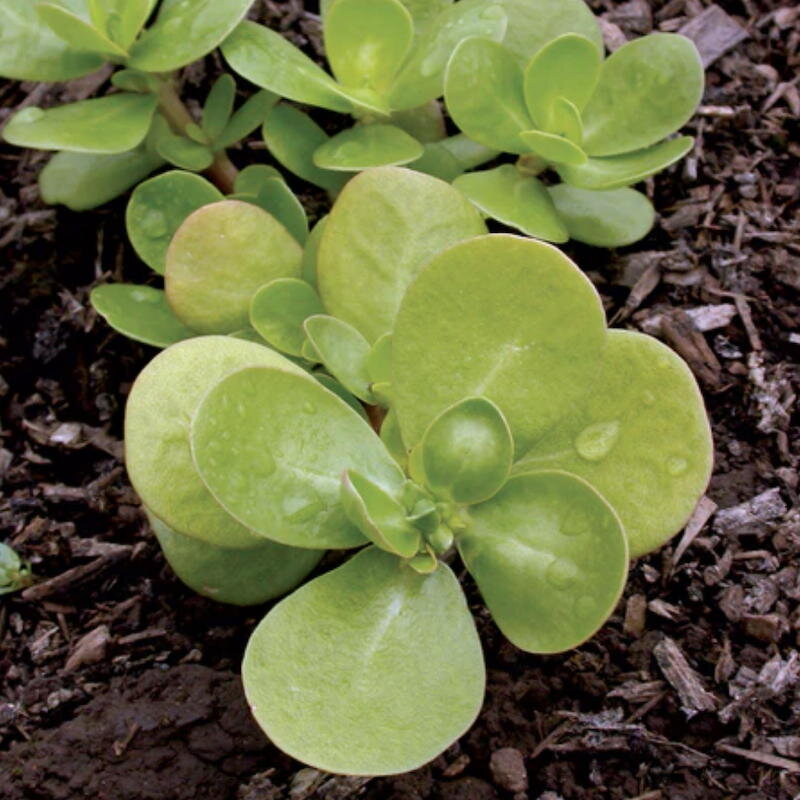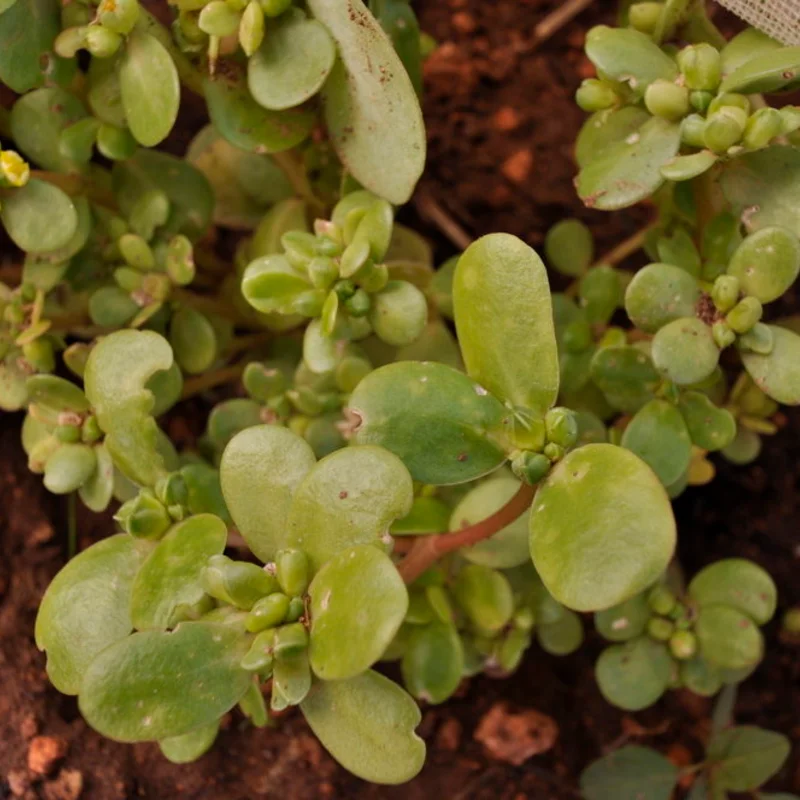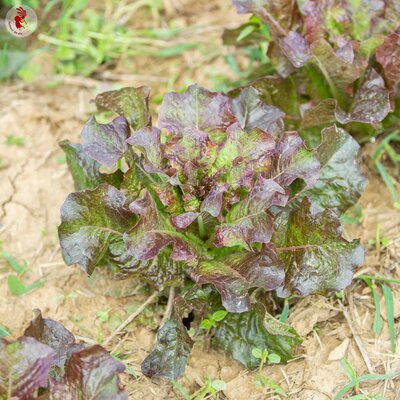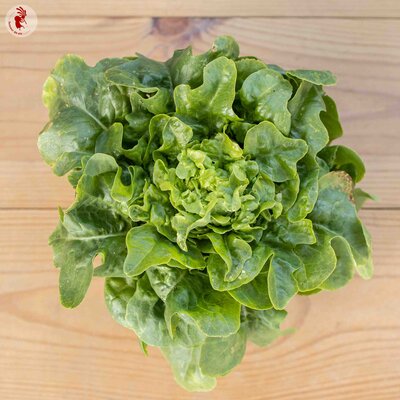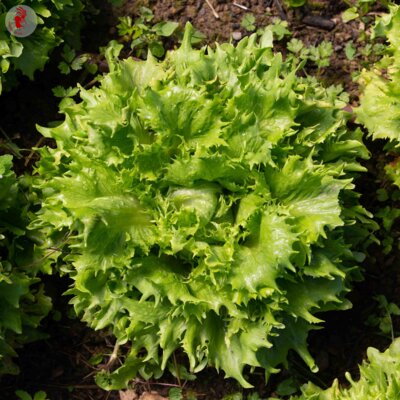Golden - Purslane
This ancient variety produces small, fat, thick leaves with a crunchy texture and a tangy, refreshing flavor. They are mainly eaten raw, in salads, but can also be cooked.
This compact variety is undemanding and adapts to a wide range of growing conditions.
These products may also be of interest to you
in the ground
Sow light-colored, directly in warm soil, in rows 25 cm apart. Keep soil cool until seedlings appear. Thin to 20 cm on the row. Staggered sowing ensures regular production of tender leaves.
Harvest by cutting stems 10 cm from the ground. Pick leaves and stems 1? to 2 months after sowing, as and when required. Purslane resprouts spontaneously. A single plant can produce several harvests a year.
April, May, June, July, August
June, July, August, September, October
in the ground, in pot
sunny, semi-shade
medium
all floor types
reheated, drained
Portulaca oleracea
mid-season
500 seeds
tender
Bronze green
35 cm
From 2 to 4 cm
round
India
1883
"Vilmorin-Andrieux "Les Plantes Potagères
This ancient variety from India is described in Vilmorin-Andrieux's 1883 book "Les Plantes Potagères".
Extremely rich in omega-3 acids, purslane has anti-inflammatory properties, promotes blood circulation and prevents deposits that can damage and clog arteries. It thus prevents cardiovascular disease (heart attacks, etc.). In addition, purslane contains high doses of vitamins C and E, beta-carotene and glutathione, giving it anti-oxidant activity, which is why it is prescribed for use against ageing. Finally, it is also used in cases of muscular contractures.



